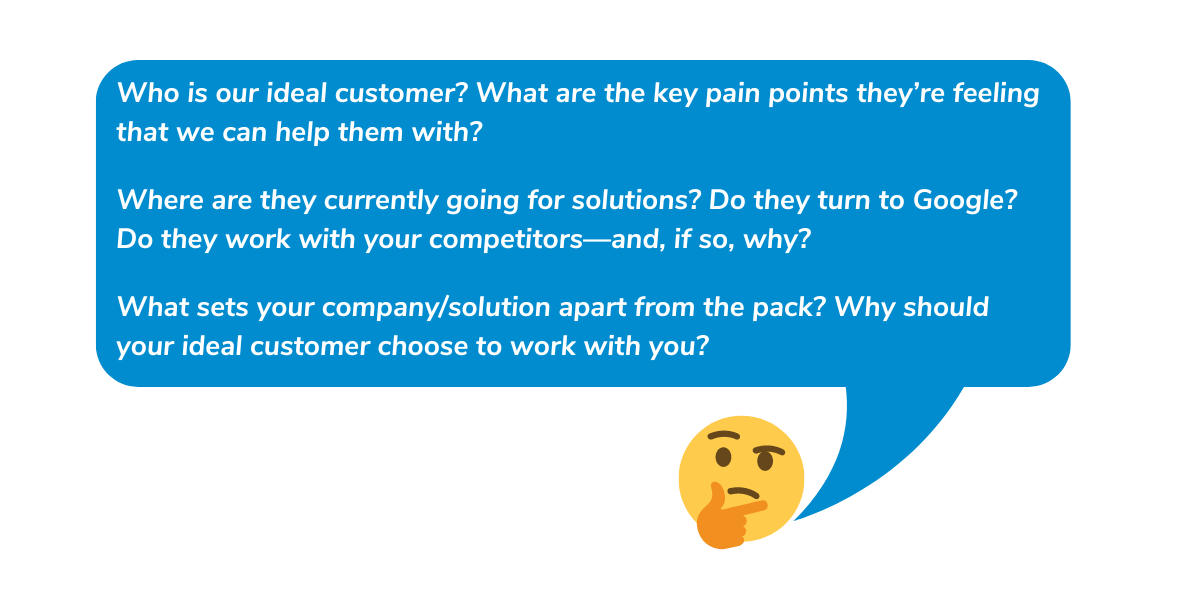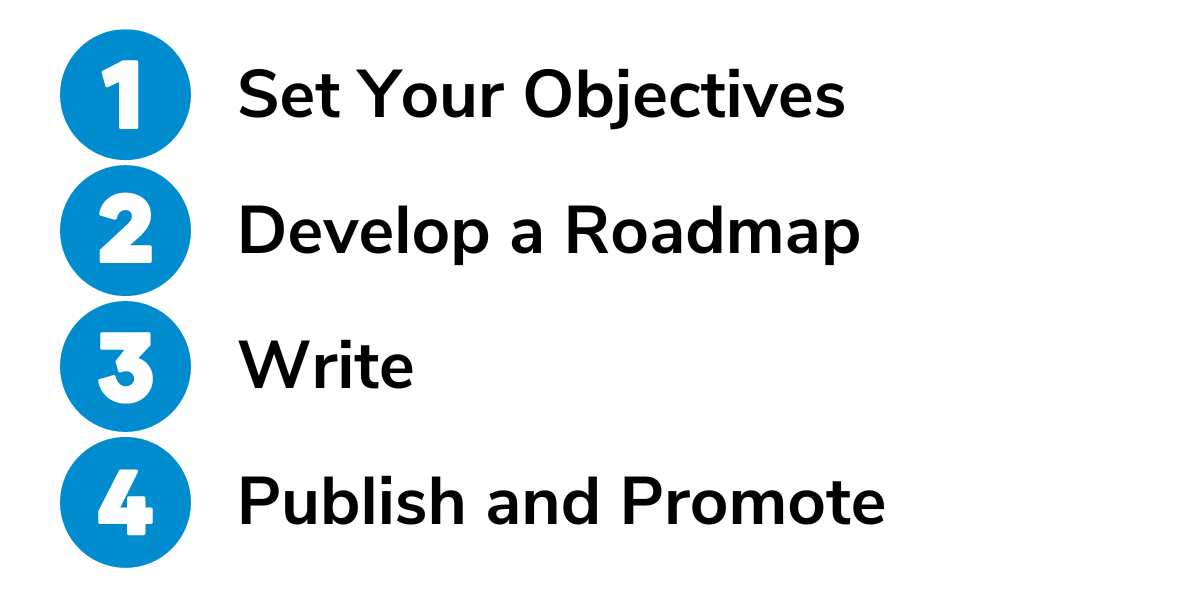What Are the 3 Components of Content Strategy?
January 17, 2023 •DJ Team

Is coming up with an effective SaaS content strategy driving you up the wall? Does it feel like you’re just spinning your wheels, burning through the marketing budget, and unsure if anything’s even working?
If so, you’re not alone. We hear from companies every day who are looking to unlock real results—the kind that propel them to page one of Google at the exact moment their ideal customers might be searching for answers. Not just any answers, mind you, but the kind of answers their SaaS solution is uniquely positioned to solve.
What is content strategy in marketing, and what are the basics of a bulletproof SaaS content strategy? Keep reading to learn more about the three must-have components—a framework, a strategy, and great content—and how you can make them work for you.
Start By Establishing a Content Strategy Framework
Every successful strategy begins with a solid foundation or framework. In thinking about what your content strategy might look like—what types of content you’ll produce, for example—it’s vital that you start with your end goals in mind.
By working through the following questions, your team can start to envision what a content strategy might look like, and what it might accomplish:

Once you know who your customers are, what they’re looking for, and why they should be looking at you, you’re ready to start plotting your strategy.
Next, Develop Your Content Strategy and Put It to Use
The second and third essential components of an effective content strategy involve development and deployment of said strategy. Developing a strategy that works is both an art and a science.
- The art is in how you position your company, content, and product. It involves nuance, as you work to produce convincing content without letting it feel off-putting and salesy.
- The science is in applying data to your approach: audience research, competitor analysis, search engine optimization (SEO), keyword research, and the like.
What’s the secret behind the best content marketing strategies? What separates them from the rest? In other words, how do they combine the art with the science? It might not be as difficult as you think! Let’s look at a reliable and repeatable 4-step approach to content strategy development.
What Are the 4 Steps of Content Strategy Development?
Step 1: Set Your Objectives
What are the most important things you want your campaign to accomplish? Schedule 20% more product demos next quarter? Increase your brand’s positioning within search engine results pages (SERPs)? For best results, set objectives that are SMART: specific, measurable, achievable, relevant, and timely.
Step 2: Develop a Roadmap
Whether you call it a roadmap or a content calendar, this is where you plot out the types of content you’ll produce, where and when you’ll publish it, and how you’ll make sure it gets in front of your target audience. As part of a content management strategy, you’ll literally “map out” the topics you’ll address.
- Pro Tip: There’s a lot of bad information out there. If you want a content strategy that is data-driven and proven to drive positive results, you’ll want to learn about Pillar-Based Marketing, or PBM
Step 3: Write
Once you have your topics figured out, you’re ready to start drafting some content. Whether you opt for PBM or one of many other types of content strategy, your content will need to be written in a way that your audience will understand. And you’ll need to write with purpose. “What are the four main purposes of content in marketing SaaS?” you might ask. They are:
- To attract and engage your ideal audience.
- To increase brand awareness, trust, and credibility.
- To complement/boost other SEO efforts.
- To generate leads, convert sales, and drive renewals.
Step 4: Publish and Promote
As you publish your content, you should start to see your company move up in search rankings, drive traffic to your website, and generate high-quality leads. As you publish your content, make sure to promote it via social media channels—wherever your customers are, looking for answers, you should be there!
So, to recap these steps:

What Are the Essential Components of Good Web Content?
If you’ve spent any amount of time on the internet looking for genuinely helpful information, you’ve probably noticed that the internet…is not always a helpful place. Whether you’re trying to solve an intensely challenging work problem or you can’t remember how to reset your home thermostat, you probably came across a decent amount of things you couldn’t even be sure were written by humans—certainly not by helpful humans who care about your problems and really want to help, at least.
That’s where the opportunity lies in creating genuinely good content, and using it to strategically position your brand as a credible authority within whatever industry you call home.
So, what are the integral components of good content? Three things:
It’s clearly written by human beings, for human beings (not search engine algorithms).
You’ll want to use language that sounds natural and aligns with your brand, and you won’t want to be too academic/formal (or too casual).
It offers helpful information, not just SEO keywords and sales pitches.
That doesn’t mean you can’t promote your brand…it just means you have to be a little more subtle about it.
It aligns with your content framework and strategy.
This means each piece of content you produce should essentially form a “cluster” or “network” of content around a high-importance topic. This approach helps build credibility and authority, among humans as well as search engines.
To understand the importance of producing relevant, valuable content—the entire premise behind Pillar-Based Marketing, and the whole reason it works so well—look no further than Google’s recent Helpful Content Update. This update was designed to help improve the search experience by directing users to the types of content that are likely to provide real, tangible value—not just content engineered for clicks. In short, if you produce genuinely great content, the algorithm(s) will notice!

DemandJump, Pillar-Based Marketing, and You
Learn more about how DemandJump and Pillar-Based Marketing can help your SaaS company to develop and deploy a game-changing website content strategy—and leave the trial-and-error approach behind! Use the button below to explore more, and get started today!
Featured Articles
Categories
- Attribution Tracking (13)
- Channel Optimization (11)
- Consumer Insights (68)
- Content Marketing (251)
- Data Science (8)
- Digital Marketing (6)
- Digital Transformation (26)
- Enterprise (10)
- Lead Generation (14)
- Market Intelligence (8)
- Marketing Analytics (39)
- Marketing Attribution (57)
- Marketing Management (153)
- Marketing Operations (86)
- Organic Search (222)
- Paid Search (52)
- Pillar-Based Marketing (63)
- Programmatic Advertising (9)
- SaaS Content (14)
- SaaS Marketing (29)
- Search Marketing (111)
- SEO Keyword Research (28)
- SEO Pillar (18)
- SEO Strategy (46)
- SMB (5)
- Website Content (12)


